Cats are enigmatic creatures, often captivating us with their playful antics, aloof demeanor, and those soothing purrs that resonate like a gentle melody. But have you ever stopped to wonder, why do cats purr? In this blog post, we’ll delve into the fascinating reasons behind this delightful sound, shedding light on the science and psychology of feline communication.
Understanding Purring: The Basics
Purring is a unique vocalization produced by cats, characterized by a continuous, low-frequency sound that can range from 25 to 150 Hertz. It is generated by the rapid contraction and relaxation of the muscles within a cat’s larynx (voice box). This rhythmic movement creates the soothing sound we associate with our furry friends.
But while purring is often associated with contentment, it serves multiple purposes. Let’s explore the primary reasons your cat might be purring.
1. Contentment and Relaxation
The most recognized reason cats purr is to express contentment. When your feline friend curls up in your lap, kneads your leg, or basks in a sunbeam, their purring is a sign of happiness. This soothing sound creates a sense of calm, both for the cat and its human companions.
2. Communication with Humans and Other Cats
Cats are social creatures, and purring is a form of communication. Kittens begin to purr within the first week of life, signaling to their mother that they are safe and content. Adult cats may purr to communicate with their humans, expressing a need for attention, food, or affection. It’s their way of saying, “I’m here, and I need you!”
3. Self-Soothing Mechanism
Interestingly, cats also purr when they are in pain, anxious, or unwell. This behavior is thought to be a self-soothing mechanism, helping them cope with stress or injury. The vibrations produced by purring can
Why your feline utters that alleviating sound? Feline sounds, particularly murmuring, have long confused pet people. It’s not when they’re blissful. Felines murmur in numerous profound states, both great and terrible.
This cat purr behavior conduct has many purposes. It assists them with conversing with one another and, surprisingly, quiet themselves down. How about we investigate the universe of feline murmuring and become familiar with its insider facts.
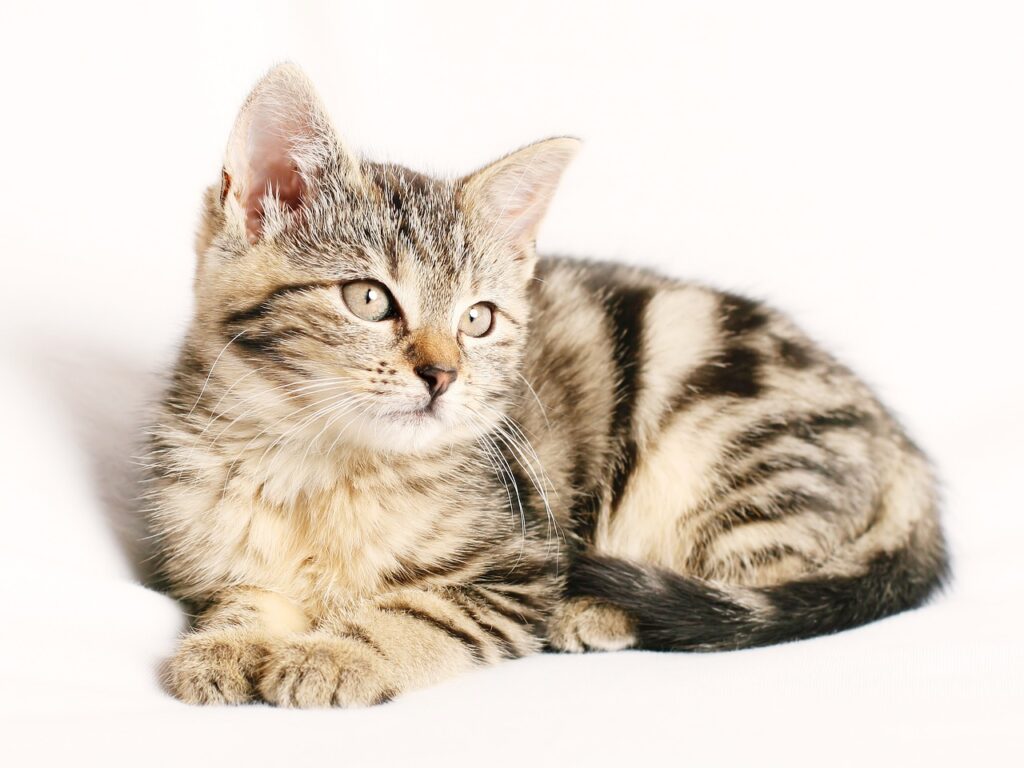
Key Takeaways
- Cats purr in both positive and negative emotional states
- Purring occurs during inhalation and exhalation
- Kittens can purr as young as 2 days old
- Purring serves multiple purposes, including communication and self-soothing
- Cats can purr at frequencies up to 150 hertz
- Purring may have healing properties for cats
The Science Behind Cat Purring
Felines murmur through an exceptional cycle. Their laryngeal muscles and stomach cooperate. These muscles jerk quickly, making vibrations that outcome in the particular murmuring sound. The recurrence of these vibrations normally goes from 25 to 150 Hertz.
The Mechanics of Purring
The vocal folds in a feline’s larynx assume a significant part in how felines murmur. As the stomach moves, it makes the vocal folds discrete and meet up rapidly. This activity makes a progression of air blasts that we see as murmuring.
The Role of Vocal Folds and Diaphragm
The vocal folds in a cat’s larynx play a crucial role in how cats purr. As the diaphragm moves, it causes the vocal folds to separate and come together quickly. This action creates a series of air bursts that we perceive as purring.
Frequency and Decibel Levels of Purrs
Most homegrown felines murmur at a normal of 25 decibels, however some can arrive at up to 92 decibels. The recurrence of feline murmurs can fluctuate in view of their size and species. For instance, enormous felines like lions and tigers produce lower recurrence murmurs contrasted with homegrown felines.
Research has demonstrated the way that felines can marginally adjust their murmurs relying upon the circumstance. A review from the College of Sussex found that felines consolidate a high-recurrence component in their murmurs when hungry. They emulate the calls of human newborn children to snatch consideration.
“Cats have learned to exploit innate tendencies in humans to respond to their purrs with urgency when seeking food.”
Understanding the science behind cat purring not only helps us appreciate this unique feline behavior. It also provides insights into cat purr communication and its potential benefits for both cats and humans.
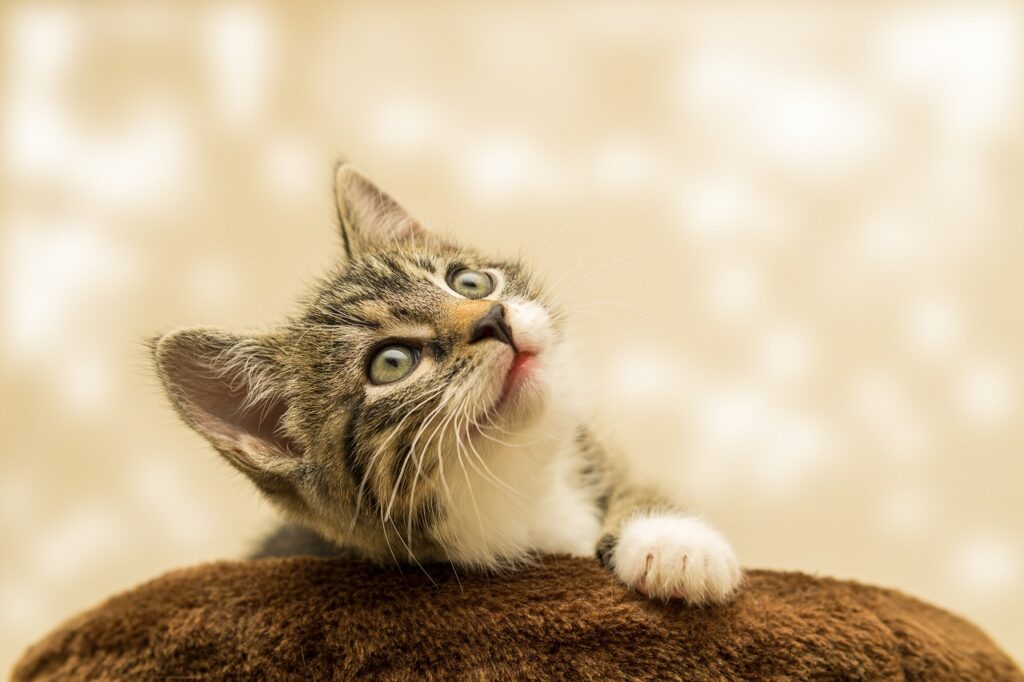
Why Do Cats Purr?
Felines murmur for some reasons, making it intriguing to study. They murmur to show satisfaction or to flag they’re vexed. Realizing the reason why cats purr assists us with interfacing with them better.
One principal reason felines murmur is to show they’re cheerful. At the point when they twist up on your lap and murmur, they’re feeling great and happy. Little cats begin murmuring right on time, around a couple of days old, to bond with their moms.
Felines additionally murmur when they’re anxious. It’s a way for them to quiet down when they’re restless or harmed. That is the reason you could hear a feline murmuring at the vet or when they’re debilitated.
“Purring is a unique vocal feature in domestic cats, occurring during both inhalation and exhalation, unlike other cat vocalizations.”
Murmuring isn’t just about sentiments. It could try and assist felines with recuperating. The vibrations from murmuring, at around 26 Hertz, can assist bones and tissues with fixing themselves. This could be the reason felines murmur when they’re harmed or in torment.
Felines likewise murmur to converse with one another and to individuals. They use murmuring to make proper acquaintance or to request food or consideration. A few felines even have an exceptional murmur to get what they need from their proprietors.
Understanding the reason why cats purr causes us to see the value in them more. By seeing how they murmur and what they do, we can comprehend them better. This assists us with interfacing with our catlike
Primal Nutrients Formula For Dogs!
Contentment and Happiness: The Classic Purr
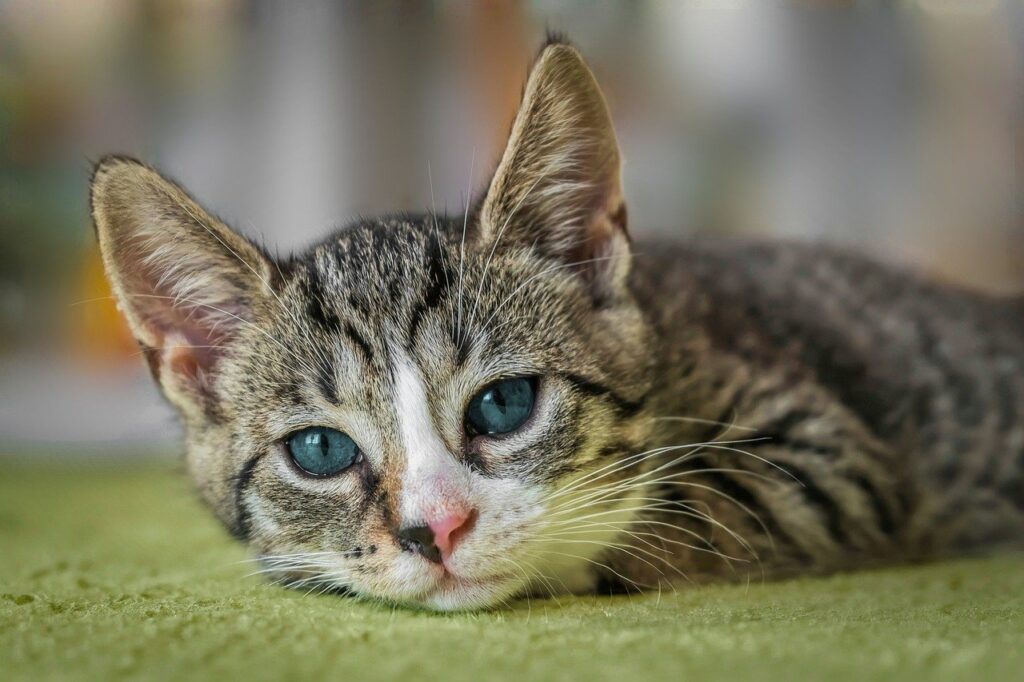
A peaceful indoor scene highlighting a feathery feline settled serenely in an individual’s lap, eyes half-shut in delight, with weak, ethereal wisps of sound waves exuding from its throat, catching the glow and quietness existing apart from everything else as delicate hands stroke its delicate fur.
Felines murmur when they’re cheerful and content. This shows they’re feeling great. Many can’t help thinking about why felines murmur when petted. This is on the grounds that they have a real sense of reassurance and euphoric.
Positive Emotional States Linked to Purring
Understanding cat purring helps us get their behavior. Cats purr to show many feelings, but happiness is common. When a cat purrs on you, it means they trust and feel at ease.
Body Language Indicators of a Happy Purr
A happy cat shows certain signs. They have relaxed faces and calm bodies. Happy cats might also:
- Knead with their paws
- Close their eyes slowly
- Have a loose, swaying tail
- Rub against you
These signs, with purring, show your cat is very happy.
“A cat’s purr is like a smile – it’s a universal sign of happiness and contentment in the feline world.”
Some cats get so happy they drool! This shows they’re extremely content and feel safe.
Purring as a Self-Soothing Mechanism
Cats purrung made sense of goes past appearance joy. Felines murmur to quiet themselves in various circumstances. This shows why felines murmur profoundly, particularly when they’re restless or pushed.
Vets frequently see cats purring during tests or in new spots. This shows murmuring is a way for felines to adapt. Felines may likewise murmur when they’re debilitated, utilizing the vibrations to comfort themselves.
Concentrates on say felines murmur at frequencies somewhere in the range of 25 and 150 Hertz. These vibrations assist with recuperating and bone development. This may be the reason felines murmur when harmed or in torment, assisting them with improving.
“Purring occurs in a wide range of circumstances, including interactions with a cat’s caretaker, greeting another familiar cat, during tactile stimulation like rolling or rubbing, and during drowsy sleep, particularly in warm, familiar environments.”
Knowing why cats purr and knead helps pet owners understand their cat’s feelings. If your cat purrs when stressed, it’s trying to calm itself. Giving it a quiet, safe place can support its natural calming behavior.
| Purring Situation | Possible Meaning |
|---|---|
| At the vet | Self-soothing in stressful environment |
| When injured | Pain relief and healing promotion |
| In new surroundings | Coping with unfamiliar situations |
| During sleep | Relaxation in comfortable environment |
The Social Aspects of Cat Purring
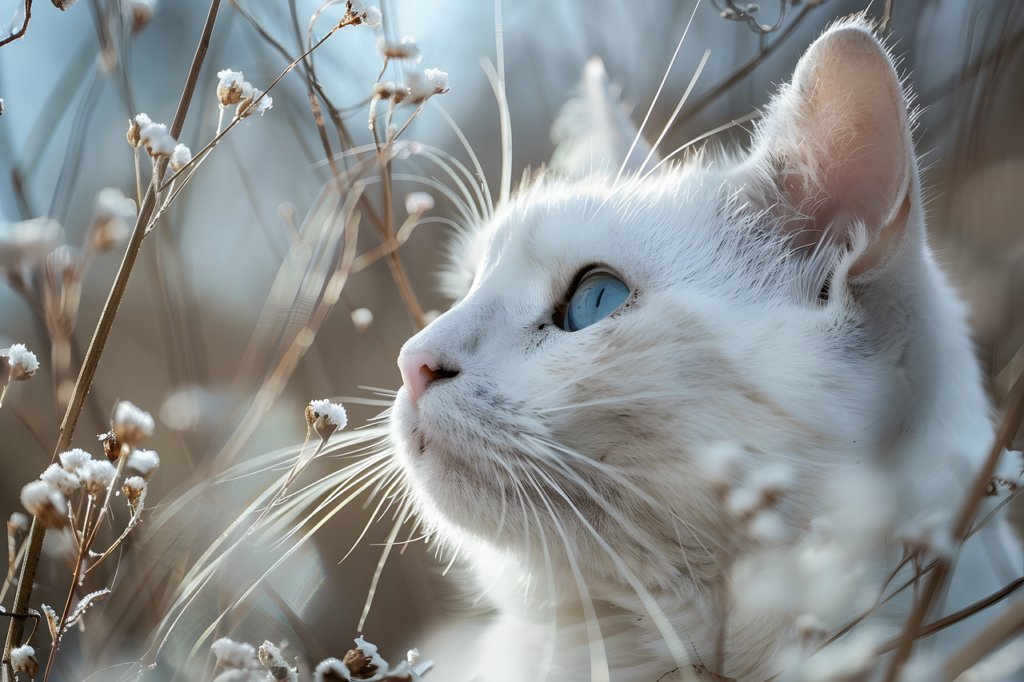
A comfortable room loaded up with warm light, two felines sitting near one another on a delicate carpet, one feline tenderly murmuring while at the same time snuggling the other, their tails laced, displaying an obligation of fellowship and solace, with a serene environment that features the social cooperation between them.
Feline murmuring is key in how felines collaborate with one another. Knowing when and why felines murmur assists us with figuring out their correspondence. Murmuring is a way for felines to show their sentiments in various social circumstances.
Purring in Greetings and Interactions
Cats purr when they meet people or other cats. This purring is a sign of friendliness. When your cat purrs at you, it’s saying “hello” and showing happiness to see you.
Embrace Your “Season of Divine Blessings,” Now!
Mother-Kitten Communication Through Purrs
Purring is vital for the bond between mother cats and their kittens. Mother cats purr to greet their kittens, and kittens start purring early. This purring helps them feel safe and close to their mother.
Purring Among Adult Cats
Adult cats purr to talk to each other. Sometimes, purring means they’re not a threat. It helps avoid fights by showing they’re calm.
Studies say cats purr by using special muscles. Their purrs have a healing effect, helping bones and healing wounds. This shows purring is not just for talking but also for healing.
Purring for Attention and Demands
Cats are intelligent and communicate with us through purring. When they want something, they purr loudly. This raises the question of why they purr so loudly at night or during mealtimes. This is explained by a University of Sussex study.
They discovered that cats can incorporate a cry for food or attention into their purrs. This motivates us to assist them. Fifty participants listened to cat purrs during the study. Purrs for food and attention sounded less pleasant and more urgent to them.
There was a unique sound to the purrs, akin to a baby’s cry. What makes cats purr, then? According to the top five theories, they do it to get attention. Cats are aware that loud purring gets them what they want. They purr for this reason when it’s
The Healing Power of Cat Purrs
Cat purrs are more than just a soothing sound. Research shows they might heal both cats and humans. Cat facts tell us purring happens at frequencies between 25 and 140 Hz. This range is linked to health benefits.
Purring During Illness or Pain
Cats purr when they’re sick or in pain. It’s a way for them to calm down. The vibrations from purring might help with healing.
Studies show that frequencies like cat purrs can help with bone repair and joint strengthening in humans.
Potential Health Benefits of Purring for Cats
Purring also helps cats. They heal quickly from broken bones and have fewer bone cancers and joint problems. This shows purring might help them heal fast.
| Health Benefit | Description |
|---|---|
| Bone Growth | Purr frequencies of 25-50 Hz promote bone density |
| Wound Healing | Vibrations aid in wound and fracture healing |
| Respiratory Relief | Purring may ease breathing for cats with respiratory issues |
Are cat purrs good for humans? The BBC says cat owners have a lower risk of heart attacks and strokes. Cat purrs can calm humans, lowering stress, anxiety, and blood pressure. Some people say being near a purring cat helps with migraines.
Kitten Purring: Early Development of the Behavior
It is common for kittens to begin purring as early as two days after birth. Not only is this behavior adorable, it’s essential for communication. Kittens primarily use purring to communicate with their mother and siblings, as opposed to adult cats who may yowl, hiss, or meow.
Kittens’ purring mechanism develops quickly. Weeks two and three demonstrate their happiness. Even as they breathe in and out, kittens never stop purring. Kittens feel closer to their mother and siblings because of this early purring.
Kittens’ purring changes as they get older. They improve their communication skills between six and ten weeks. They begin purring more frequently and in various ways. At this point, kittens start purring like adult cats when they want food or to greet people. Recall,
A.I. Cracks Ancient Wealth Code in 19 Seconds?
FAQ
What is the science behind how cats purr?
Purring is a behavior cats do with their mouth closed. It happens when air moves over the glottis. This makes the vocal folds open and close fast.
Purring happens when they breathe in and out, with a short pause in between. The diaphragm also helps make the purr sound go on and on.
What are the different reasons why cats purr?
Cats purr for many reasons. They might be happy, anxious, or just want attention. Purring can also mean they’re feeling stressed or sick.
By watching how a cat acts, you can tell what they’re feeling. Purring can show they’re feeling good or trying to relax.
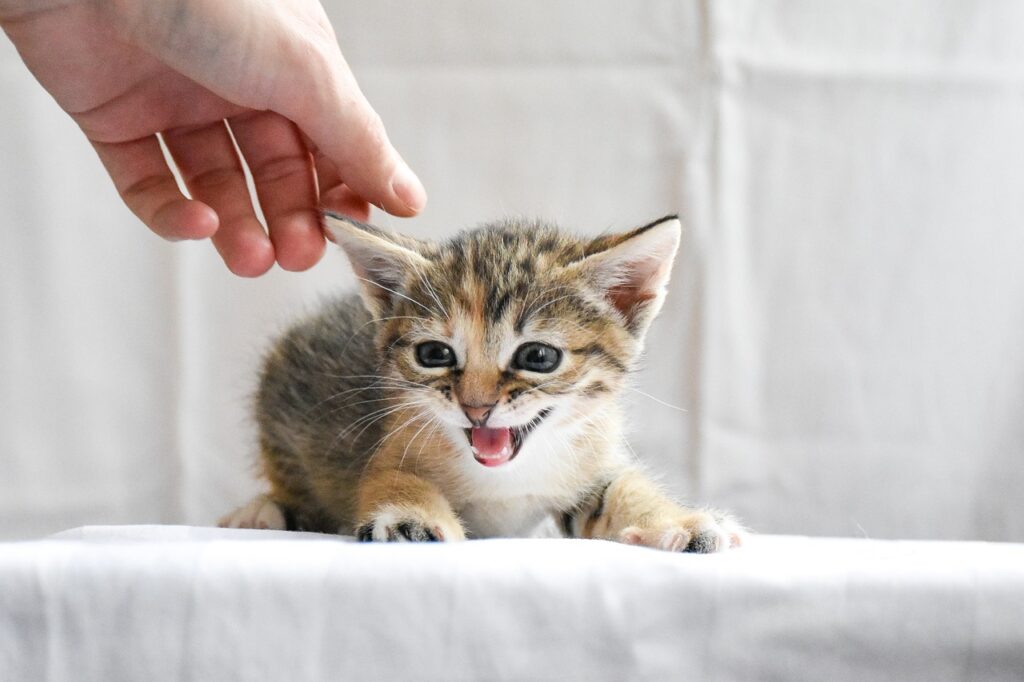
How can I tell if my cat is purring because theyre happy?
Happy cats often purr. They might look relaxed and happy. They purr when they’re being petted or when they’re excited.
Some cats get so happy they start to drool and knead. This is a sign they’re really enjoying themselves.
Why do cats sometimes purr when they seem stressed or anxious?
Cats purr to calm down when they’re stressed. This can happen in new places or when they’re scared. Purring helps them feel better.
Do cats use purring for communication?
Yes, cats purr to talk to each other. They purr when they meet people or other cats. Mother cats purr to their kittens, teaching them to purr too.
Adult cats also purr to show they’re not a threat. This helps avoid fights.
Why do cats purr when they want something?
Cats purr to ask for attention or food. They might rub against people or things while purring. It’s their way of saying they need something.
Do cats purr when theyre sick or in pain?
Sick or hurt cats might purr to ask for help. Some even purr before they die. It might be a comforting sound for them.
Some think purring could help them heal. But we need more research to know for sure.
When do kittens start purring?
Kittens can purr as early as 2 days old. They purr while nursing, stopping only to swallow. Kittens purr in the same situations as adult cats.
This shows purring is important for them from a young age. It helps them communicate and feel comforted.
Why billionaires use ‘BioWave Power Generators’ in their homes?